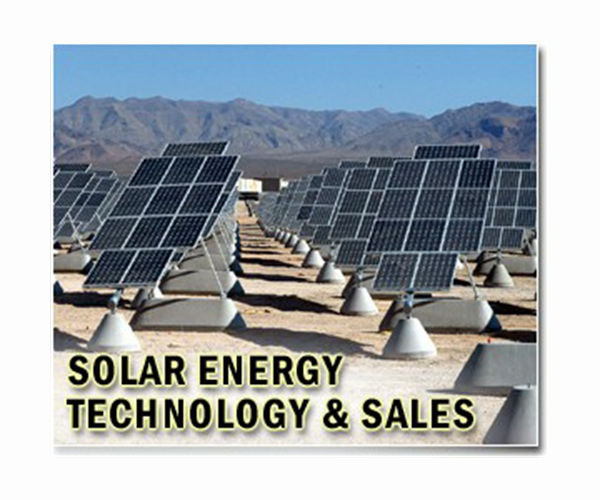The installations of the solar energy system influence less than 1 percent of AG soil from Arkansas
Large-scale solar energy arroys occupy around 0.2 percent of agricultural land in Arkansas, according to an analysis from the University of Arkansas System Division of Agriculture.
The production of solar energy is increasingly being used to meet both energy needs and zero net emission goals in the United States. Arkansas follows this trend with various production production systems in the field of solar energy built in 2023 and 2024, and more planned to come online online. This has expressed some concern about the relocation of agricultural land for non-food production purposes.
“With the economy of Arkansas more depending on agriculture compared to the nation and the surrounding States, derivation from agricultural land to other use of other use of producer and consumer interest,” said Mike Popp, Harold F. Ohlendorf professor of agricultural economy and Agribusiness and Co-author of a recently published facts “
Although it is generally considered to be a minimal impact on crush prices, there are other questions about the consequences of proximal real estate value, exposure to weather risks and considerations of land recovery.
By 2026 there will be 15 provinces in Arkansas, usually in the Delta-dominated Delta, with solar arroys on utility scale. Utility scale is defined as 20 megawatts or larger. Currently, 11 provinces have these large-scale solar projects in countries defined by an US Department of Agriculture as agricultural land. Four more projects on the utility scale are planned until 2026, including one in Grant County on land as ‘forest or timberland areas’.
Met behulp van informatie die is verzameld van de US Energy Information Administration, tonen de onderzoekers aan dat zonne-arrays op nutsbedrijven 0,2 procent van de 13,7 miljoen hectare agrarische grond van de staat zullen bezetten onder de huidige projecties tot 2026. In provincies waar deze grotere zonnepanelen worden gebruikt, varieert landgebruik van 0,2 tot 1,7 procent agrarisch land.
The solar projects on the Nuts interest range from a maximum of 445 hectares for a site of 50 megawatts to 2,670 hectares for a site of 300 megawatts.
From 2023 the state had around 15,000 megawatts electricity, with natural gas, coal, nuclear and other energy sources such as hydropower, solar energy and wind. According to the study, up to 133,500 hectares of soil would be needed to double the electric generation capacity of the state with solar energy, whereby the demand for power of natural gas, coal, nuclear and hydropower is compensated during the day.
“Even below this extreme level of solar development, which probably won’t happen, Solar would use less than 1 percent of the 13.7 million hectares of agricultural land,” Popp said.
POPP is a faculty member at the Arkansas Agricultural Experiment Station, the arm arm of the Division of Agriculture and the Dale Bumpers College of Agricultural, Food and Life Sciences.
Solar’s growth
The generation of solar energy has almost doubled in efficiency over the past decade. To produce 1 megawatt – enough to provide electric houses with electricity every year – is approximately 5.5 hectares of land, according to a study cited by the authors, a study from 2013, on the other hand, showed that 1 Megawatt solar energy production required approximately 9 hectare of land.
The number of solar panels in Arkansas has also grown rapidly in recent years, with 1,100 megawatts added in 2024 and another 400 megawatt planned for this year.
According to USDA data that is quoted by the researchers, solar projects have removed less than 0.05 percent of the country from rural national purposes.
Agrivoltaic
With around 28,000 hectares of agricultural land consisting of irrigation reservoirs, POPP said that floating solar panels have become an interesting area for research to reduce the impact on agricultural use.
Various other options exist for solar energy systems to integrate with agriculture, known as “agrivoltaics,” Popp said. Combining solar installations with sheep grazing and honey on management are often cited examples of agrivoltaisches.
Preferred countries
Private landowners rental contract for lasing solar development, sometimes more than a 30-year contract, explained the study. Voluntary solar rental contracts vary from $ 450 to $ 2,500 per hectare with a preference for liberated, leveled or south -facing land that are not leglands.
“Fits cost trends and future projections that projects on Nutschaal are the cheapest renewable energy source,” said the study. “As such, the expansion of this sector is expected. With careful planning, such systems can lead to economic and environmental benefits with minimal negative agricultural group.”
Authors of the study were Travis Wagher, a Public Policy Program Ph.D. student at the University of Arkansas; Hunter Goodman, assistant professor at the Division of Agriculture’s Cooperative Extension Service in the Community department, Professional and Economic Development; Shelby Rider, program employee for the Experiment Station in the Agricultural Economics and Agribusiness department; and Yi Liang, assistant professor of biological and agricultural engineering for the Division of Agriculture and the University of Arkansas’ College of Engineering.
Sun on poultry farms
POPP and colleagues from the Agricultural Economics and Agribusiness department and the Economic Research Service of the USDA have also recently published a study in the evaluation of agricultural financing and investigates financing options for solar investments on poultry farms.
With the help of their poultry sun analysis decision software, they showed that a note of 10 years bundled with a second loan that is repaid with the help of income tax credits in the course of one to five years, resulted in a lower break-even electricity costs and at the same time approaching the cash flow and loan capacity problems. A longer 20-year-old note further relieved cash flow problems at the expense of less favorable leverage and net present value, concluded the study.
Research report:Agricultural country Footprint of Fotovoltaic Sun Installations in Arkansas

